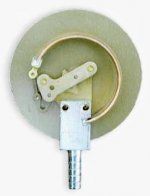How long is is suppose to purge at those parameters; 29.5 hg and 90-95 f?
Anyone purging at a lower hg?
I am trying to get shatter with a smooth uniform
appearence. Having problem with a bunch of small
bubbles forming inside the shatter.
I am using -40 butane and dryed frozen material
or dewaxing in a seperate vessel so I have very little
wax in my product
Anyone purging at a lower hg?
I am trying to get shatter with a smooth uniform
appearence. Having problem with a bunch of small
bubbles forming inside the shatter.
I am using -40 butane and dryed frozen material
or dewaxing in a seperate vessel so I have very little
wax in my product





